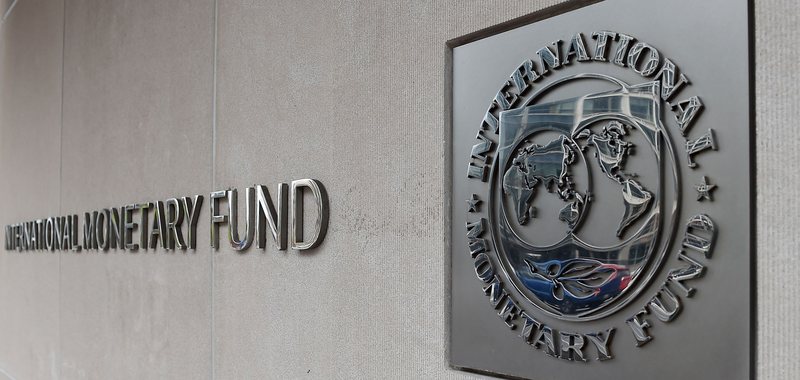Ranking of average salaries in Europe: Which countries pay the most?

Have you ever wondered which countries pay the best in Europe? Or how does your salary stack up against others in the EU? With living costs varying so much, how does your salary compare when adjusted for purchasing power standards? There are various indicators for comparing wages and income, but Eurostat's new calculation, the average annual full-time adjusted wage per employee, turns out to be particularly useful. It is estimated from the average gross annual salary for a full-time job.
According to Eurostat, in 2023 the average annual full-time adjusted wage per employee ranged from €13,503 in Bulgaria to €81,064 in Luxembourg, with the EU average being €37,863. Nine member states reported wages above the EU average, while 17 countries fell below. The Netherlands is not included in the data due to differences in methodology.
Apart from Luxembourg, the average adjusted salary was above €50,000 in five other countries. They included: Denmark (€67,604), Ireland (€58,679), Belgium (€57,989), Austria (€54,508) and Germany (€50,988). Finland, Sweden and France also rank above the EU average. At the bottom, Bulgaria is followed by Hungary (€16,895), Greece (€17,013), Romania (€17,739), Poland (€18,054) and Slovakia (€19,001), all with annual salaries below €20,000. Italy and Spain fall below the EU average, with annual salaries of around €32,500.
How do inequalities change when adjusted for purchasing power?
Average wages in purchasing power standard (PPS) provide a fairer comparison as living costs, especially housing costs, vary significantly across European countries. Purchasing power parity (PPP): eliminates the effect of price level differences between countries". PPP is "an artificial currency unit", where one unit of PPP can theoretically buy the same amount of goods and services in any country.
When looking at the average annual full-time adjusted wage per worker in PPS, the gaps are significantly narrower compared to nominal figures. However, substantial differences remain across the EU. For example, in nominal terms, the highest average wage was six times the lowest, while this ratio decreases to 2.5 times when adjusted for PPS.
Greece holds the lowest ranking in PPS
The average adjusted annual full-time salary per employee, measured in PPS, ranged from 20,525 in Greece to 53,745 in Luxembourg. In nominal terms, Greece was ranked third from the bottom, but it had the worst result in PPS.
In this indicator, only seven countries exceeded the EU average. In addition to Luxembourg, Belgium, Denmark, Germany and Austria reported wages above PPS 45,000. Ireland and France were the other two countries above the EU average, with PPS wages of 41,581 and 39,110 respectively. Italy had the lowest salary among the EU's 'Big Four', at PPS 33,723, while Spain recorded a slightly higher figure at PPS 35,774, both remaining below the EU average.
Main trends in European average wages
Analyzing nominal wages and PPS, the following main findings emerge:
· Northern and Western Europe consistently lead average wages, but their advantage narrows in the PPS-adjusted ranking
· Eastern Europe improves slightly in PPS, but average wages remain significantly lower than the EU average in these member states
· Southern Europe struggles on both metrics, with low wages and limited purchasing power.
How have average salaries changed from 2022 to 2023?
Among the 26 EU countries, the average annual full-time adjusted wage per employee decreased only in Sweden between 2022 and 2023. In Sweden, the average wage fell by €1,817, reflecting a decrease of 4%. However, this decrease is due to the conversion of the Swedish krona to the euro; in local currency, wages have increased slightly. In the EU, wages increased by €2,225 or 6%.
In nominal terms, Luxembourg, Belgium and Ireland saw the highest increases, each exceeding €4,000, while average wages in Malta, Greece and Italy rose by less than €1,000. Looking at percentage changes, Romania, Hungary, Poland, Latvia and Croatia saw the highest increases, with average wages rising by more than 15%. In contrast, increases were below 5% in Malta, Italy, Greece, Denmark, Finland and Cyprus.
Sufficient salary to live well in the EU
Eurostat started calculating "adjusted average full-time wages per employee" after the adoption of the Blue Card Directive in 2021. This metric serves as a threshold for granting work permits to highly qualified workers at national level. According to Eurostat metadata: "Practically, the indicator represents a salary sufficient to live with dignity in a Member State."
Pay is adjusted by converting part-time wages to full-time gross equivalents. Part-time work remains an important trend in Europe. In 2023, 17% of workers aged 20-64 in the EU worked part-time according to Eurostat. This ratio was even higher in some countries, such as Germany with 29% and the Netherlands with 39%.

Italy, €5,500 bonus for births in 2025 - Aims to boost population growth as it faces demographic crisis
As part of the Budget Law for 2025, the Italian government has introduced a package of economic support designed for families with children born in 2025. The......

Rehabilitation of the Hekal-Klos road in Mallakastër, Balluku begins: It serves the residents and visitors of the archaeological park
In the municipality of Mallakastra, work has started on the rehabilitation of the Hekal-Klos road. An investment of the Albanian Development Fund which......

Franca planifikon reduktimin e deficitit buxhetor - Bayrou kërkon të sigurojë mbështetjen e Parlamentit për 2025
Kryeministri francez Francois Bayrou tha se ai synonte të arrinte një marrëveshje me parlamentin për një buxhet të vitit 2025 që do të reduktonte deficitin e......

Green Energy Expansion to Continue - Data Centers Will Drive Demand for Renewables
The expansion of renewable energy in the US will continue under the incoming administration of Donald Trump, said the head of the US arm of Japan's largest......

Economy picks up pace, 4.09% in third quarter/ Trade, transport and accommodation had the biggest impact on growth
The Gross Domestic Product is estimated to increase during the third quarter of the year, according to data from the Institute of Statistics. This increase......

Qatar warns Europe - It will stop gas exports if the EU implements the new regulation
Qatar has warned it will cut off gas exports to the European Union if the bloc's countries impose penalties under recently passed legislation, Qatar's Energy......

What is citizen engagement in the Economic Growth Plan? - Ambassador Vos: Inclusion must guide every step of the process
The Economic Growth Plan, as the largest financial program of the European Union, has started its implementation in Albania. In partnership with the Embassy......

"Kosovo's economy will slow down" - In the framework of two agreements, the IMF disburses an additional 36 million euros
Kosovo's economic growth is expected to slow down in 2025. According to the International Monetary Fund, the current year will end with an economic growth of......





















